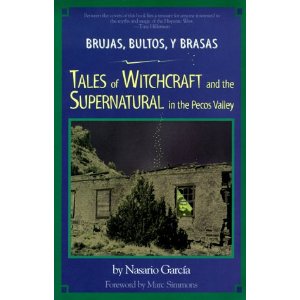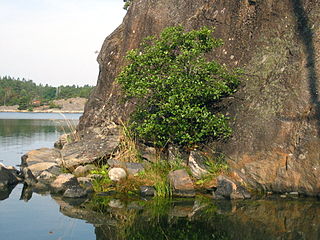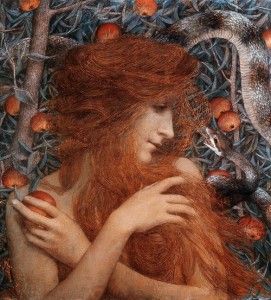 Most people who meet my casual acquaintance struggle with where to place me. Many file me with “must be Native American.” A few ask point blank if my parents were hippies. When I lived in southern Arizona, I was surprised (and a bit disturbed, because I wasn’t used to it) to discover that many Mexicans and Mexican-Americans had me pegged right away. Some (actually the majority) carefully avoided me. Others cajoled me into telling their fortunes or even asked for charms. My landlady had trouble getting repairs done because the Mexican construction workers she employed refused to enter my house. A friend of mine, also a brujo, had an even more disconcerting experience: some Spanish-speaking landscapers he hired reported him to the sheriff.In Brujas, Bultos, y Brasas: Tales of Witchcraft and the Supernatural in the Pecos Valley Nasario Garcia interviews los viejitos, the old folks, in rural New Mexico about the witches. The book reminds me of ghost story compilations from the Ozarks or Appalachia. Witches and supernatural occurrences are portrayed in wholly malevolent ways. The line between witches and healers is firmly drawn, something which contradicts my own observations in southern Arizona and in another part of New Mexico. The familiar story of folk healers defaming rival healers with accusations of witchcraft sounds like it might be part of the subtext in these reminiscences, although this is reading between the lines. Another possible parallel with other folklore of European derivation is the description of ghosts or witches as points of light – brasas or embers. In some cultures the fairies are described as sparks of light.The viejitos often talk about El Mal Ojo, the evil eye. According to Viviana Tapia, “You treated it by spitting wild pie plant with cachana, a root used to ward off evil. You had to spit it – spit in the face of the afflicted so that the evil eye could be lifted, so that it would go away. It’s cachana, that’s what the medicine is called. The same persons who would spit it are the ones who would chew it (the root). And it had to be a Juan or a Juana in order to cure the victim, got it? Any other way was not possible.”Another common theme in the interviews is La Llorona, The Wailing Woman, for those who like to collect these stories. I won’t go into this legend here today, but if there’s some interest I’ll do a post on it later.Most of the people interviewed do not appear to know anything special about witchcraft (although you never know), but there is one woman I would like to have talked to. The interviews happened about twenty years ago, so it is unlikely that any of the storytellers are still alive. I appreciated having both the Spanish and the translation. Academic researchers have a hard time understanding magical concepts, and what they interpret is highly suspect. Although my Spanish is not the best, I think the translation is dependable.I wonder if some day a folklorist in the Sonoran Desert will be collecting stories about La Bruja Gringa. I did NOT put El Ojo on anybody, just so you know. I will haunt you with a thousand brasas if you say I did.
Most people who meet my casual acquaintance struggle with where to place me. Many file me with “must be Native American.” A few ask point blank if my parents were hippies. When I lived in southern Arizona, I was surprised (and a bit disturbed, because I wasn’t used to it) to discover that many Mexicans and Mexican-Americans had me pegged right away. Some (actually the majority) carefully avoided me. Others cajoled me into telling their fortunes or even asked for charms. My landlady had trouble getting repairs done because the Mexican construction workers she employed refused to enter my house. A friend of mine, also a brujo, had an even more disconcerting experience: some Spanish-speaking landscapers he hired reported him to the sheriff.In Brujas, Bultos, y Brasas: Tales of Witchcraft and the Supernatural in the Pecos Valley Nasario Garcia interviews los viejitos, the old folks, in rural New Mexico about the witches. The book reminds me of ghost story compilations from the Ozarks or Appalachia. Witches and supernatural occurrences are portrayed in wholly malevolent ways. The line between witches and healers is firmly drawn, something which contradicts my own observations in southern Arizona and in another part of New Mexico. The familiar story of folk healers defaming rival healers with accusations of witchcraft sounds like it might be part of the subtext in these reminiscences, although this is reading between the lines. Another possible parallel with other folklore of European derivation is the description of ghosts or witches as points of light – brasas or embers. In some cultures the fairies are described as sparks of light.The viejitos often talk about El Mal Ojo, the evil eye. According to Viviana Tapia, “You treated it by spitting wild pie plant with cachana, a root used to ward off evil. You had to spit it – spit in the face of the afflicted so that the evil eye could be lifted, so that it would go away. It’s cachana, that’s what the medicine is called. The same persons who would spit it are the ones who would chew it (the root). And it had to be a Juan or a Juana in order to cure the victim, got it? Any other way was not possible.”Another common theme in the interviews is La Llorona, The Wailing Woman, for those who like to collect these stories. I won’t go into this legend here today, but if there’s some interest I’ll do a post on it later.Most of the people interviewed do not appear to know anything special about witchcraft (although you never know), but there is one woman I would like to have talked to. The interviews happened about twenty years ago, so it is unlikely that any of the storytellers are still alive. I appreciated having both the Spanish and the translation. Academic researchers have a hard time understanding magical concepts, and what they interpret is highly suspect. Although my Spanish is not the best, I think the translation is dependable.I wonder if some day a folklorist in the Sonoran Desert will be collecting stories about La Bruja Gringa. I did NOT put El Ojo on anybody, just so you know. I will haunt you with a thousand brasas if you say I did.
Year: 2013
The Alder Tree
January 11, 2013
Another Post at Return to Mago Blog
January 10, 2013
A Look Ahead
January 4, 2013
Through Another Doorway
January 1, 2013 Janus is the Roman god of the new year, with two faces looking toward the past and the future. In his right hand he holds a key and in his left a staff. He is a god of peace whose worship was more central in matrifocal times. The month of January is named for him. Janus is a winter god, the counterpart of the summer goddess Juno. From the Pagan Book of Days:
Janus is the Roman god of the new year, with two faces looking toward the past and the future. In his right hand he holds a key and in his left a staff. He is a god of peace whose worship was more central in matrifocal times. The month of January is named for him. Janus is a winter god, the counterpart of the summer goddess Juno. From the Pagan Book of Days:
Janus is the male equivalent of one of the versions of the goddess Juno-Janus, who in her two-faced aspects of Antevorta and Postvorta looks simultaneously forward and backward as does Janus. January marks the beginning of the new year yet contains elements of that which went before. Its quality is thus one of new possibilities but constrained by that which took place in the old year before it.
SourcesJordan, Michael. Encyclopedia of Gods: Over 2,500 Deities of the World. New York: Facts on File, 1993.Pennick, Nigel. The Pagan Book of Days: A Guide to the Festivals, Traditions, and Sacred Days of the Year. Rochester, VT: Destiny Books, 1992.
